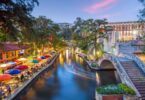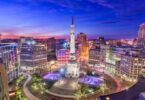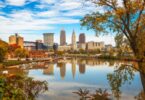Hispanic culture played a significant role in America’s early history. The arrival of explorers to America in the 15th century opened the gates for Spanish explorers and missionaries who exerted their influence in the Americas. In the process, the Spanish people shaped much of the religious and racial makeup of the Southern and Pacific Coastal United States in particular, and left behind an important historical footprint. Visiting these Hispanic heritage locations is essential if you want to understand and appreciate the culture and history that has left such an indelible mark on American society.
Here are just six places in the U.S. where you can appreciate Hispanic heritage and history.
Coronado National Memorial — Hereford, AZ

Coronado National Memorial is located in Arizona and commemorates Francisco Vasquez de Coronado’s 1540 expedition to the United States. At the time, there were rumors circulating that this uncharted territory had cities decorated with gold and jewels, proving a tempting prospect for explorers and adventurers. Whether you’re planning on taking a trip to Arizona in the summer or another time of the year, make sure you pack some comfy shoes and even some camping gear too, as the location is famous as a hiking destination.
The Alamo — San Antonio

The Alamo, located in San Antonio, is most famous as the site of a historic battle for an independent Texas, fought against Mexico in 1836. But before that, it was one of the first Spanish missions in the region, converted into a fortress by the Mexican military, and then captured by the Army of Texas in December of 1835. The site eventually fell to the numerically superior Mexican forces, but only after a heroic last stand by the Texans. Among those who fell at the battle was famous American folk hero Davy Crockett.
The Alamo is the most popular historical site in Texas and still stands as a symbol of defiance against the odds. Admission is free but if you’d like a guided tour it will cost $40 per adult while children under 5 years old get in for free.
Chicano Park — San Diego

Hasta La Bahia Mural – Chicano Park by Jay Galvin licensed under CC BY-ND 2.0
Founded in 1970, San Diego’s 7.9-acre Chicano Park is dedicated to celebrating Hispanic culture. Located under the San Diego Coronado Bridge, the park features murals that tell a number of different stories and showcase amazing paintings of artists, activists, and revolutionaries like Frida Kahlo, Cesar Chavez, Che Guevara, and Pancho Villa. From local artists like Salvador Torres and Glory Sanchez to well-known international artists, there’s a lot of artwork for you to admire here.
Cesar Chavez National Monument — Keene, CA

The Cesar Chavez National Monument honors the late Latin American civil rights activist, who played an important role as a co-founder of the National Farm Workers Association, which later went on to merge with the Agricultural Workers Organizing Committee to form the United Farm Workers of America. Designated in 2012, the site became the first national park site to honor a modern Latino American. You can see where Chavez lived and worked towards the end of his life and also visit Villa La Paz, a conference center that Chavez used for meeting other activists.
Castillo de San Marcos National Monument — St. Augustine, FL

Dating back to 1672, the Castillo de San Marcos is one of the oldest structures in the United States. Its composition is distinctive, as it was built from coquina, a type of shell stone quarried from nearby Anastasia Island. The fort was originally constructed by the Spanish to protect St. Augustine from attack from the British, who were increasingly looking to gain a foothold in North America. A surprising fact about the fort is that it has never passed ownership through the use of force — only through military agreements or political treaties.
You Might Also Enjoy: Seven Hispanic Heritage Museums in the U.S. You Need to Visit
Chamizal National Memorial — El Paso, TX

“Nuestra Herencia,” a series of murals by Carlos Flores, adorns the walls of Chamizal Monument. Photo by Jasperdo, licensed under CC BY-ND 2.0
For 100 years, Chamizal was the scene of a border dispute between Mexico and the United States. The disagreement was rooted in the fact that a flood in the mid-1800s had shifted existing boundaries on either side of the Rio Grande. This site commemorates the Chamizal Treaty of 1963 that permanently settled the issue under Mexican President Adolfo Lopez Mateos and U.S. Presidents John F. Kennedy and Lyndon B. Johnson. Today, the Chamizal National Museum hosts cultural performances that promote unity and understanding between the two nations.
Have you visited a historical Hispanic site other than the ones mentioned? Tell us about it in the comments below!








